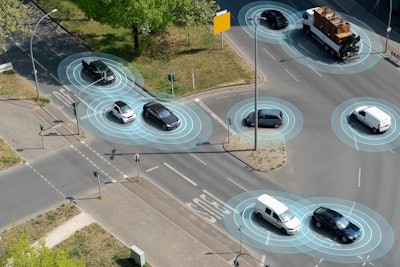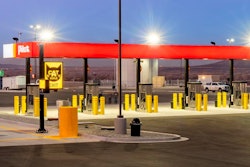
Vision Zero is one of the newer strategies looking to eliminate deaths and severe injuries due to road traffic and unsafe infrastructure.
First successfully implemented in parts of Europe, the strategy has recently gained traction in North American cities, in addition to the new administration.
Since the inception of roadways and traffic, most drivers were conditioned to think fatalities on the road were inevitable, but the reality is that there are now many resources that can prevent these tragedies.
The key is to take a proactive, preventative approach that prioritizes traffic safety as a public health issue. With more than 40,000 people killed in crashes in the U.S. last year, something needs to start changing immediately. The significant loss of life exacts a tragic toll. Moreover, pedestrian deaths in 2020 increased by 21% from 2019 – even with fewer vehicles on the road that year.
Not only is there personal loss, but also deep community impacts – including economic costs and emotional trauma – as well as increasing taxpayer spending on emergency response and long-term healthcare costs.
Committing to change with new strategies and new technology
Vision Zero specializes in showing a different approach to traffic safety. It is much different than the traditional approach used today in that it starts with the ethical belief that everyone reserves the right to experience safe use of the roadway, and it is the shared responsibility of policy makers, system designers and technology experts to ensure safer roadways.
The traditional approach of traffic pushes responsibility onto an individual, however with system designers working together to create smart infrastructure through the new strategy of Vision Zero, various different aspects of the roads and traffic will ultimately become safer. Vision Zero also differs from traditional approaches by acknowledging the many factors that go into creating safe mobility in communities.
Collaborations are integral between traffic planners, engineers, and policy makers alike. Committing to Vision Zero means unlearning old ways of the roads and making room for new strategies to better the transportation infrastructure we use every day. This means that system designers and policy makers are expected to improve the roadway environment and policies in addition to other related systems in order to dramatically lessen the severity of crashes.
Advanced technologies, including video analytics solutions, use artificial intelligence (AI) and machine learning approaches to analyze large quantities of video streams in real-time to then provide actionable insights on complex traffic situations including road hazards, congestion and traffic collisions.
For example, companies like Waycare, Derq and Applied Information provide software that analyzes behavioral patterns of vehicles, pedestrians, and traffic flows from existing traffic infrastructure in real-time to identify and predict potential road incidents. These advanced video analytics can then activate a pedestrian blinking sign to alert a distracted driver and prevent them from colliding with a pedestrian about to cross the road. They can also alert a city operator so emergency responders can be dispatched to the location of the incident if a collision is detected. Furthermore, real-time AI analytics provide additional context in the form of incident identification, near-miss heatmaps and accurate traffic counts to traffic engineers and operators, which ultimately allows them to better understand traffic patterns and proactively improve the safety of roads.
The U.S. administrative plan for infrastructure
The Biden administration has proposed to spend an estimated $1 trillion on infrastructure projects. The proposed bill was negotiated among a group of bipartisan Senators that includes a large piece of the bill targeting innovations for smart infrastructure.
The administration’s transportation infrastructure goes hand in hand with the Vision Zero strategy as they are both working to fix the same problem. Through increased funding for roadway projects, the bipartisan proposal puts roadways on the right track to decrease fatalities, and hopefully lead to zero fatalities over the years.
It’s estimated that the infrastructure plan will spend $312 billion on surface transportation projects, with $109 billion invested in roads, bridges and other major projects. From there, $20 billion is estimated to be put toward improving the safety of all roadway users, with a specific emphasis on bicyclist and pedestrian safety. The proposed plan includes increasing funding on existing safety programs, while also creating a new program called “Safe Streets for All.” This new program will provide funding for state and local governments’ Vision Zero plans.
Preventing roadway incidents is key to Vision Zero, and advanced technologies like real-time video analytics play an integral role in smart infrastructure.
While legislation is a good first step, it will not work without new technology to enable better road safety. It’s important that local city and community leaders adopt the mentality of Vision Zero to enable smart infrastructure advances. While access to the data collected through sensors being deployed is a crucial first step, the implementation of technology solutions is necessary to move forward to actually improve road safety and reduce traffic fatalities.
Dr. Georges Aoude is the CEO and Co-Founder of Derq, an MIT spinoff powering the future of connected and autonomous roads, making cities smarter and safer for all road users and enabling the deployment of autonomous vehicles at scale. Derq provides cities and fleets with an award-winning and patented smart infrastructure platform powered by AI that leverages existing traffic cameras and sensors to help them tackle the most challenging road safety and traffic management problems.










